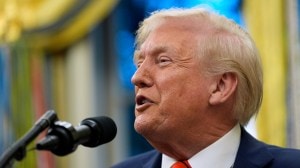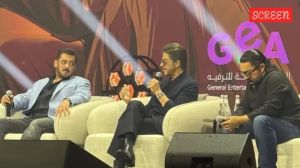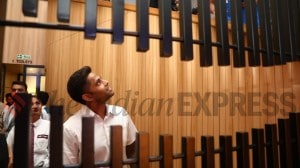Tasneem Zakaria Mehta: ‘We focus on how great we were in the past, but what about today?’
Conceptualised, authored and edited by Tasneem Zakaria Mehta, the museum's honorary director and managing trustee, and with entries co-authored by the museum's staff, the book is co-published with Harper Design.
 Tasneem Zakaria Mehta
Tasneem Zakaria MehtaEarlier this month, Maharashtra’s minister of tourism Aaditya Thackeray released a book and inaugurated an exhibition at Dr Bhau Daji Lad Museum commemorating the 150th anniversary of its establishment in Byculla. The book “Mumbai – A City Through Objects” compiles 101 objects and stories from the museum’s collection.
Conceptualised, authored and edited by Tasneem Zakaria Mehta, the museum’s honorary director and managing trustee, and with entries co-authored by the museum’s staff, the book is co-published with Harper Design. Mehta speaks to Benita Fernando about the connection of the museum to Mumbai and the importance of museums in contemporary India. Excerpts:
The book points to the museum’s connection to Mumbai right from its establishment. Could you tell us more about this?
It was very much a museum to showcase Bombay — current day Mumbai. The Presidency was important, but it was really about the city. It was the engine driving the whole country. Everything went from and came into Bombay. The museum was meant to present these products of trade — pottery, decorative crafts, building material, minerals, seeds, plants, medicinal herbs and teas.
Bombay’s merchants came together to fund the museum because colonial officials were stingy. Though, in the end, the Municipal Corporation bore 50 per cent of the cost as the building was stuck due to lack of funds.
How is the museum redefining its connection to Mumbai?
Let me go back in time. The models [of professions, ethnicities and religions] had become very popular at the Great Exhibition of 1851 and subsequent showings. So, the museum curator in the early 20th century decided to focus on the city through its people represented by these miniature sculptures. The museum architecture is classical but the content is very much contemporary of that time. The objects presented innovation in design and form to suit new tastes.
During the independence movement, there was a focus on classical culture and this diluted the focus on the city… So yes, I am redefining the museum’s association with the city by bringing back the focus on urban contemporary culture through innovative exhibitions. We focus on how great we were in the past, but what about today?
The dioramas and models are among the highlights of the museum and the book devotes a whole section to them as “People of India”. What’s their significance?
No other museum has such a comprehensive collection of people of the city. These are not little toys but sculptures done by master sculptors. The British didn’t use the word ‘sculptor’ because they didn’t want to dignify the craftsmen with the term. They called them ‘modellers’.
George Birdwood, the first curator of the museum, didn’t think Indians were capable of sculpture or fine arts. He thought they were fine craftsmen who could execute what is given to them but not capable of achieving anything beyond replication, except for slight innovation in design. They thought Indians didn’t have the intellect needed to produce a Michelangelo-level sculpture.
A dedicated sculptor from Lucknow, Shiv Prasad Balsing, produced these models in Bombay. He made them by referencing photography as well as prints and paintings by earlier artists. So there is an interesting art historical trajectory here. The facial expressions of the models and the photographs are almost exact.
Buy Now | Our best subscription plan now has a special price
The book captures the pluralism that’s inherent in the museum collection, right from a diorama of Emperor Jehangir on Shikar (1927-28) to Mumbadevi’s statue (2009). How important are museum collections in context of the present times?
What’s happening now is a standardisation of culture. There is a lot of history being effaced, rewritten and re-contextualised, and the interpretation is not supported by fact or research. That’s what we have been careful of in this book. It’s deep archival research till we ended up hitting rock bottom at our own archives, and then we explored other museums and libraries in India, the UK and the US.
The book starts with the making of Bombay through maps, sketches and memorials. What’s their significance?
The museum has a beautiful and extraordinary collection of maps, some of which are in the book. The relief map of Heptanesia, between 1700 and 1800, is one such example. A silver replica of it was gifted to King George V and Queen Mary when they visited in 1911. We are planning an exhibition of the city’s architecture and urban development, where more of these maps will be shown.







